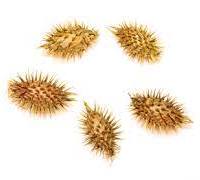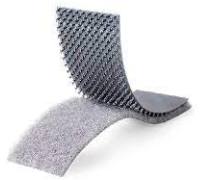| |
|
Velcro
Invention Story
Invention of Hook and Loop
Fasteners 'Velcro'
|
|
|
| |
For centuries, man has
walked through fields of weeds and arrived home with burrs stuck to his
clothing. Yet, no one turned this
problem to an opportunity until 1948.
George de Mestral,
a Swiss engineer,
on a hiking trip through the woods. He found burrs clinging to his pants and also to his dog's
fur. |
|
 |
| |
|
On closer
inspection, he
found that the
burr's hooks
would cling to
anything
loop-shaped.
This accidental discovery led him to
invention of
hook and loop fasteners.
|
|
|
|
|
|
'What makes burrs so difficult
to remove?' de Mestral wondered.
When he returned home, de
Mestral examined one under his
microscope and ultimately
invented a hook-and-loop
fastener of his own. The
principle was simple. The
cocklebur is a maze of thin
strands with burrs (or hooks) on
the ends that cling to fabrics
or animal fur.
|
|
| |
By
the accident of the cockleburs
sticking to his jacket, George
de Mestral recognized the
potential for a practical new
fastener.
It
took eight years to
experiment, develop, and
perfect the invention, which
consists of two strips of nylon
fabric.
|
|
 |
 |
|
One strip contains thousands of small
hooks. The other strip contains small loops. When the two strips are
pressed together, they form a strong bond.
Today his invention – Velcro – can be
found on everything from clothing and lunch bags to space suits and
spacecraft. |
|
| |
It
is strong, easily separated,
lightweight, durable, and
washable, comes in a variety of
colors, and won’t jam.
|
|
Ask
Learning SWOT Questions |
|
|
|